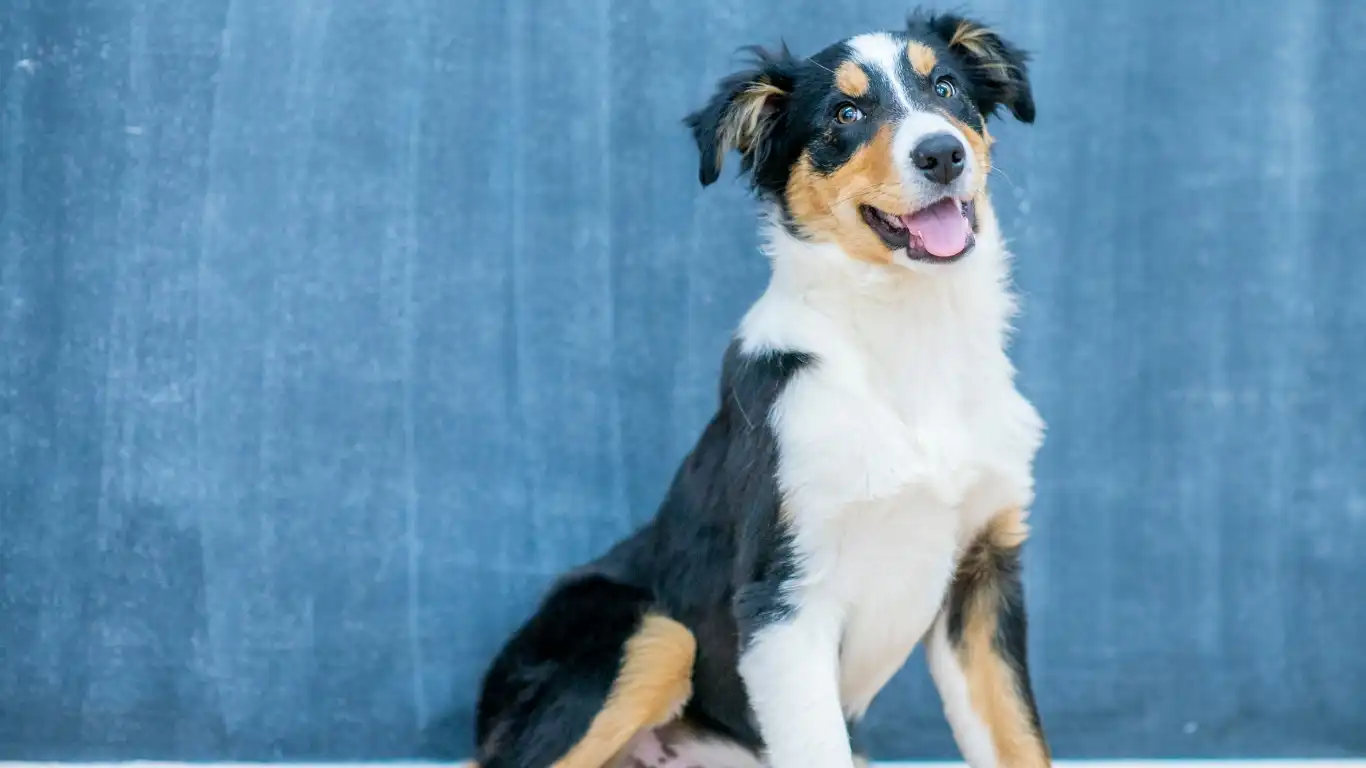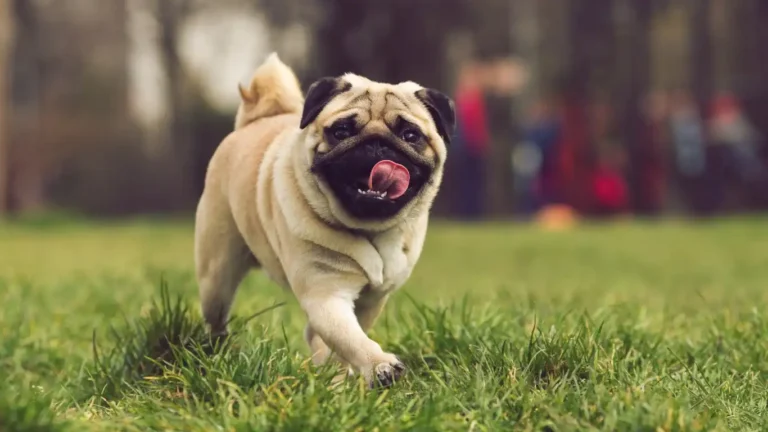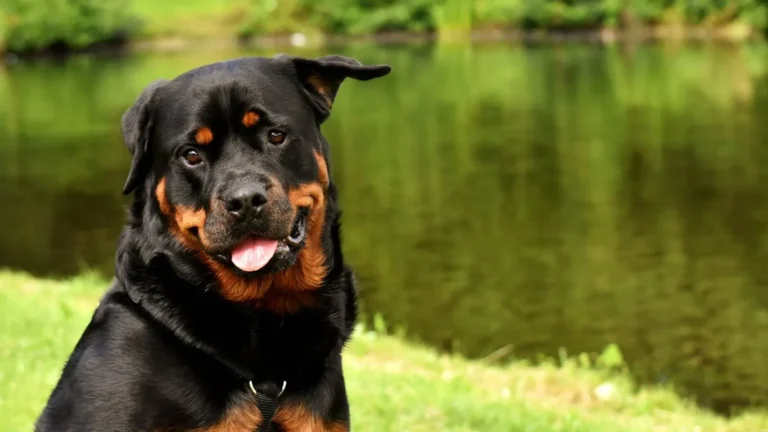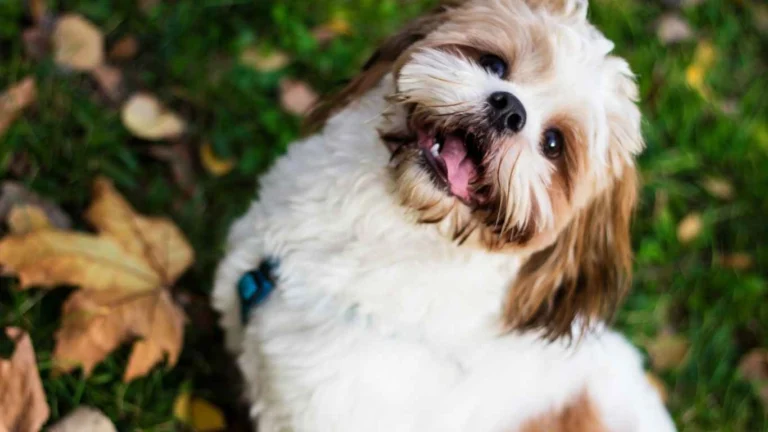How to Keep a Dog Calm During Thunderstorms: Proven Tips for Immediate Relief
As a Veterinary Technician specializing in nutrition, I’ve seen all sorts of challenges pet owners face when it comes to their furry friends’ behavior and health. One of the most common issues that often come up, especially during storm season, is how to keep a dog calm during thunderstorms. It’s a topic that resonates with so many pet parents—whether it’s your own dog that starts trembling, pacing, or hiding when the first crack of thunder sounds, or if you’re trying to help a friend’s pet cope with this anxiety. The fear some dogs experience during storms can be overwhelming, not just for the dogs, but for their owners too. Fortunately, there are strategies and tips to make those stormy nights a little more manageable. Let’s dive into how we can help our pets feel safe and secure during these frightening moments.
Understanding Why Dogs Are Afraid of Thunderstorms

Before jumping into solutions, it’s important to understand why some dogs are so scared of thunderstorms. Dogs don’t just fear the loud noise of thunder; it’s a combination of factors that can make them feel anxious and stressed. I’ve worked with a variety of cases over the years, and I’ve noticed a few common reasons why dogs can become so terrified during a storm:
- Sound Sensitivity: Dogs have a much more acute sense of hearing than humans, so the sound of thunder might be startling and unnerving. For some dogs, the loud crack of thunder feels almost deafening.
- Visual Cues: Flashing lightning or dark clouds can confuse and frighten dogs. Their natural instincts might interpret these as signs of impending danger, causing them to react fearfully.
- Static Electricity: Some studies suggest that static electricity in the air during a storm could make dogs feel uncomfortable or even cause them to have an odd sensation on their fur, contributing to their anxiety.
- Previous Negative Experiences: If a dog has had a scary experience during a storm in the past, such as being outside when a storm hit or experiencing a loud thunderclap, it might associate future storms with that fear.
Understanding these triggers is crucial in knowing how to help your dog feel safe and secure during these storms. The next step is figuring out what practical steps you can take to ease their anxiety.
How to Keep a Dog Calm During Thunderstorms: Strategies That Work

Now that we have a better understanding of why dogs are scared of thunderstorms, let’s explore some strategies that can help keep your dog calm. I’ve used many of these methods myself, and I’ve seen firsthand how they can make a difference in a dog’s response to storm anxiety.
Create a Safe and Cozy Space
One of the first things you can do is create a space where your dog feels safe. For many dogs, having a quiet, enclosed area can provide comfort during a storm. It could be a crate, a small room, or even a corner with their favorite blanket or bed. Make sure the space is free from drafts or loud noises, as this can help reduce external stressors.
- Crate Training: If your dog is already crate trained, this can be an excellent place to keep them during a storm. The enclosed feeling of a crate can mimic the sense of security that dogs get from being in a den-like space.
- Blankets and Comfort Items: If your dog is particularly scared, try draping a heavy blanket over their crate or creating a fort-like environment. The weight of the blanket can help calm them, much like a weighted blanket calms some people.
- Personal Items: Add something that smells familiar to them—like a worn T-shirt or their favorite toy. The scent of a trusted person can have a calming effect.
Use Calming Aids
There are a variety of calming products available to help soothe your dog during a thunderstorm. Some of these have been shown to work well in my experience:
- Thundershirts: A Thundershirt is a popular solution that provides gentle pressure on your dog’s body. This mimics the sensation of being hugged and can have a calming effect on anxious dogs.
- Calming Diffusers: Products like Adaptil, which release dog-appeasing pheromones, can help reduce anxiety in many dogs. These pheromones mimic those a mother dog releases to soothe her puppies.
- CBD Oil or Treats: CBD products have become more widely used for pet anxiety. I’ve seen many dogs benefit from CBD oil or treats designed specifically for calming effects during stressful situations.
- Herbal Supplements: There are also natural calming supplements that include ingredients like valerian root, chamomile, and L-theanine, which can help your dog relax.
Distraction and Desensitization Techniques
Sometimes, distraction can be one of the best ways to keep a dog calm during a thunderstorm. If your dog is not terribly afraid of the storm but still gets a little nervous, providing something to focus on might be enough to keep them from getting worked up.
- Interactive Toys: A food-dispensing toy like a Kong filled with peanut butter or treats can keep your dog distracted and engaged. The act of chewing or licking can have a soothing effect.
- Background Noise: Playing soothing music or white noise can help drown out the sounds of thunder. Some dogs are more sensitive to the loud noise, so covering it with another sound can be beneficial.
- Desensitization Training: If your dog’s anxiety is extreme, you might consider a gradual desensitization program, where you expose them to recorded thunder sounds at low volumes and gradually increase the volume over time, paired with positive reinforcement.
How to Keep a Dog Calm During Thunderstorms: More Tips to Soothe Your Furry Friend

In the first part of this article, we covered some foundational strategies that can help keep your dog calm during thunderstorms. Creating a cozy space, using calming aids, and providing distractions are all essential tools in reducing anxiety. But there’s more to it than just having a few products on hand. If your dog suffers from intense storm anxiety, it might take a bit more to calm them down. Let’s dive into additional methods that can really help your dog feel safe and reduce their stress during these storms.
Training and Behavior Modification: Helping Your Dog Cope Long-Term
Sometimes, the most effective way to help your dog feel more relaxed during a storm is through training and behavior modification. As a vet tech, I’ve seen how important it is to approach storm anxiety with patience and consistency. Training your dog to feel calm during storms doesn’t happen overnight, but it can make a huge difference in the long run. Here are some training techniques that have worked well for many dogs:
Positive Reinforcement for Calm Behavior
Positive reinforcement is one of the most powerful tools in any pet owner’s training toolkit. When your dog remains calm during a storm, reward them immediately with treats, praise, or their favorite toy. I’ve had clients tell me how quickly their dogs started to associate calm behavior with something good after just a few storms. It works because dogs thrive on rewards. When they realize that staying relaxed during a storm leads to something they enjoy, they start to see the storm as less threatening.
For example, if your dog starts to shake or get nervous during a thunderclap, instead of reacting negatively or scolding them (which will only increase anxiety), calmly offer them a treat or some praise when they show signs of relaxation. With enough consistency, your dog will begin to understand that calm behavior during a storm is the way to earn positive reinforcement.
Desensitization and Counterconditioning
Desensitization is another effective method for helping your dog gradually become more comfortable with storms. The key here is to expose your dog to storm sounds in a controlled, low-pressure environment. The goal is to slowly increase your dog’s tolerance to these sounds without overwhelming them.
Start by playing recordings of thunderstorms at a very low volume while engaging in a fun activity with your dog. Maybe it’s playtime with their favorite ball or training exercises with treats. The idea is to pair the sound of thunder with something positive so that your dog doesn’t associate the sound with fear. Over time, you can gradually increase the volume of the thunder recordings. If done correctly, your dog should become less sensitive to the noise.
Counterconditioning: Changing the Emotional Response
Counterconditioning is a technique that pairs something your dog loves (like treats or toys) with a stressful stimulus—in this case, thunderstorms. The aim is to change your dog’s emotional response to storms. In my experience, this can be one of the most successful methods to reduce storm-related anxiety. Here’s how it works:
- Play thunderstorm sounds at a low volume while your dog is enjoying something they really like, such as a tasty treat or a favorite toy.
- As your dog begins to associate the sound of thunder with positive experiences, their fear response will gradually be replaced with excitement or calm.
- Increase the volume slowly, continuing to pair it with rewards or activities your dog enjoys.
It might take some time, but consistency is key. Dogs can learn to associate these previously scary noises with positive outcomes, ultimately helping to reduce their anxiety during real storms.
Environmental Changes to Help Your Dog Stay Calm During Storms

Sometimes, it’s not just about the emotional or behavioral techniques; environmental changes can also play a significant role in helping your dog feel at ease during storms. There are several adjustments you can make to your home environment to help create a calmer atmosphere for your dog:
Close the Windows and Block the Visual Triggers
One simple but often overlooked tip is to close the windows during a storm. Thunderstorms can bring about loud noises and flashing lights, which can trigger anxiety in many dogs. If your dog is particularly sensitive to the visual aspects of a storm, like lightning, try drawing the curtains or shutting blinds. This removes some of the external stimuli and helps create a darker, more comforting environment.
Additionally, consider turning off the lights. Many dogs feel safer in the dark, as it can mimic their natural den environment. The less external stimulation they have, the easier it is for them to focus on their safe space rather than the storm itself.
Turn on White Noise or Calming Music
In many cases, dogs find the sound of thunder distressing because it’s sudden, loud, and unfamiliar. One way to help cover up the noise is by turning on white noise, calming music, or even a fan. I’ve seen clients who play classical music or use white noise machines to drown out the storm’s sound, which often provides relief to their pets. Some dogs may respond better to the sound of voices, so a radio talk show or even an audiobook could work wonders to distract them from the storm.
Another option is to use storm-specific calming music. There are actually albums created specifically for dogs to help soothe them during stressful situations like thunderstorms. These albums are often available on streaming platforms, and I’ve had clients swear by them for calming their pets down. It’s worth giving it a try!
Keep Your Dog Indoors and Safe
When storms are brewing, it’s essential to keep your dog indoors and away from windows or doors. Dogs that are left outside during a thunderstorm can be much more prone to panic, and some may try to escape the yard in an attempt to flee from the storm. I’ve had cases where dogs have injured themselves trying to escape during a storm out of fear. So, if there’s a storm in the forecast, keep your dog safely inside with you. Make sure they’re comfortable and as relaxed as possible by providing the strategies mentioned earlier.
When to Seek Professional Help for Storm Anxiety

If your dog’s anxiety is severe and nothing seems to help, it might be time to seek professional help. As a vet tech, I’ve seen cases where storm anxiety can escalate to a point where it affects a dog’s overall well-being. In some situations, professional intervention from a veterinary behaviorist or your regular vet can be beneficial. They may recommend medications or other therapies that can help manage your dog’s anxiety.
In these cases, a veterinarian can work with you to develop a comprehensive plan that includes medications to calm your dog, combined with behavior modification strategies. Medications like anti-anxiety drugs may be used temporarily to help ease your dog’s symptoms during storms, but it’s always important to pair this with behavior therapy for long-term success.
Don’t be afraid to reach out for professional help if your dog’s fear of thunderstorms is affecting their quality of life. With the right support, your dog can feel more comfortable and safe during stormy weather.
Additional Resources and Support for Dogs with Storm Anxiety

By now, you’ve likely got a handful of effective strategies for managing your dog’s anxiety during thunderstorms. From calming techniques to behavior modification, there’s a lot you can do to help your furry friend cope. But I want to take a moment to explore additional resources and support systems that may be helpful when it comes to tackling storm-related anxiety. As a veterinary technician with experience working closely with pet owners, I’ve seen how these extra steps can make a real difference in a dog’s ability to feel safe and secure.
Professional Behavioral Training and Therapy
If your dog’s storm anxiety is severe or persistent, you might want to look into professional behavioral training. While many of the techniques we’ve discussed so far can be effective, sometimes working with a certified behaviorist can offer a more tailored and thorough approach. A certified dog trainer or veterinary behaviorist has specialized knowledge and can work directly with your dog to develop a personalized training plan.
Working with a behaviorist can help you understand your dog’s anxiety triggers in more detail, and they may use more advanced techniques, such as counterconditioning and desensitization, to gradually expose your dog to the sounds of a storm while reinforcing positive behaviors. Over time, this approach can help change your dog’s emotional response to thunderstorms, making them less fearful and reactive.
One key resource is the American Kennel Club’s (AKC) list of certified trainers, which can help you find a professional in your area. If your dog’s storm anxiety is significantly impacting their daily life, having a trained professional guide you through the process can be invaluable.
Medication Options for Severe Anxiety
In some cases, behavioral training and calming products may not be enough to help a dog with severe anxiety. If your dog’s fear of thunderstorms is extreme, your veterinarian may recommend medication to help manage their symptoms. Medications can be particularly useful for short-term relief during stormy weather, but they are most effective when combined with other behavior-modifying strategies.
Some common medications used to treat anxiety in dogs include:
- SSRIs (Selective Serotonin Reuptake Inhibitors): Medications like fluoxetine (Prozac) or sertraline can help balance the chemicals in your dog’s brain, reducing anxiety over time.
- Benzodiazepines: These are fast-acting medications that can help your dog feel relaxed and calm during stressful events like thunderstorms. Common options include alprazolam (Xanax) and diazepam (Valium).
- Alpha-casozepine and other natural options: Some veterinarians may suggest more natural supplements, like alpha-casozepine (a casein-derived calming agent), which can help dogs feel more relaxed without the side effects of traditional medications.
As a general rule, it’s important to consult your veterinarian before starting any medication. They’ll help you determine the best course of action based on your dog’s individual health needs and behavior. And if you’re worried about long-term use, a vet will work with you to manage treatment and explore alternatives.
Storm Anxiety Support Groups
Sometimes, it helps to know you’re not alone. That’s why joining a support group, either in person or online, can be a great resource for pet owners struggling with storm anxiety. These communities allow you to share experiences, ask questions, and find encouragement from others who are going through the same challenges. I’ve personally witnessed how beneficial these groups can be, especially when it comes to exchanging tips or learning about new products or techniques that other dog owners have tried successfully.
Some online communities, like those on platforms such as Facebook, Reddit, and various pet-focused forums, are dedicated to topics like storm anxiety. You can ask for advice, read others’ success stories, and even find recommendations for local professionals in your area. Connecting with other dog parents going through similar experiences can make the whole process feel less daunting.
Alternatives and Innovative Solutions

As storm anxiety becomes more recognized in pets, new and innovative products continue to emerge on the market. In addition to the methods we’ve already discussed, you might find the following alternatives helpful in keeping your dog calm during thunderstorms:
Calming Collars
Calming collars, like the Adaptil collar, release pheromones that mimic the calming scent mother dogs use to soothe their puppies. These collars are worn around your dog’s neck and continuously emit the soothing pheromones, providing ongoing anxiety relief. Many owners swear by them, and I’ve seen positive results with dogs who have severe anxiety during storms.
Acupressure and Massage Therapy
If you’ve ever tried a massage for stress relief, you know how soothing it can be. Well, the same principle can apply to dogs. Acupressure and gentle massage can help relax your dog’s muscles and calm their nerves during a storm. There are specific techniques you can use on your dog to trigger relaxation points, especially around their neck and shoulders. If you’re unfamiliar with these techniques, consider consulting a professional or attending a pet massage class. Some dog owners even report a marked improvement in their dog’s anxiety after using acupressure as a regular treatment.
Herbal Remedies and Aromatherapy
If you prefer a more natural approach, there are several herbal remedies that can help calm your dog during a storm. Ingredients like valerian root, chamomile, and lavender have all been shown to have calming effects on dogs. You can find these ingredients in dog-safe supplements, sprays, or diffusers.
Aromatherapy diffusers designed for pets are another option. These devices can safely disperse calming scents throughout the room. Just be sure to check that any oils you use are pet-safe, as certain oils can be toxic to dogs. Some pet owners find that a combination of herbal remedies and calming scents creates a relaxing environment for their dog during stormy weather.
Disclaimer
While the methods and techniques discussed in this article can be highly effective for many dogs, it’s important to remember that every dog is different. Some dogs may require a combination of techniques, while others may benefit from specific medications or professional interventions. Always consult with your veterinarian before beginning any new treatment plan, especially if you’re considering medication or advanced behavioral training. Your veterinarian will be able to provide personalized advice based on your dog’s individual needs and health conditions.
Additionally, while we strive to provide accurate and helpful information, this article should not be used as a substitute for professional veterinary care. Always seek the advice of a qualified veterinarian or certified dog behaviorist for any severe cases of storm anxiety or other behavioral issues in your dog.
Useful Links
For more information about dog behavior and anxiety management, check out the following resources:





